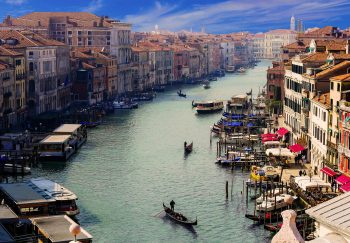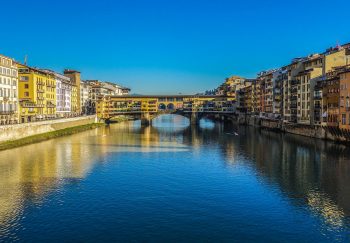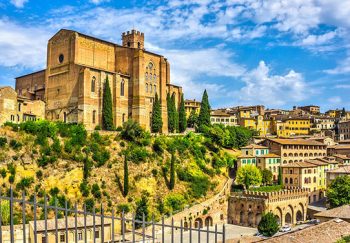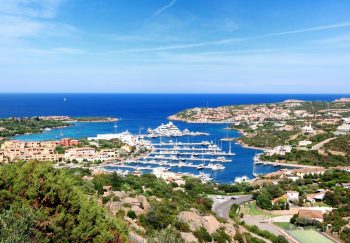The Vatican Museums house some of the most important and culturally significant artworks in the world. While museums have the potential for being so powerful to their visitors, few museums can be as frustrating or difficult to navigate.
It is home to approximately 1,400 rooms, chapels, galleries, and other works. Most of these are part of the Vatican Library, Museums, and Museums. Even the most experienced visitor can find it overwhelming to see all of the paintings, sculptures, and other works inside. It is best to have a plan, or an idea, of what you will find inside. Although most people visit the Vatican Museums to see the Sistine Chapel and the Chapel, there is so much more to the Vatican Museums.
Our own Vatican tours allow you to skip long lines and enjoy the unique splendor of the Vatican with the assistance of a local expert who will bring the art alive with stories and information that only those who have studied them for their entire lives can understand. Take a look at the Vatican tours here. But if you’re going on your own, we want you to get the best out of it.
What should you see while visiting the Vatican Museums
Sistine Chapel Ceiling
Photo courtesy Wikicommons
The Cappella Sistina is perhaps the most well-known room in the Vatican Museums. It has twice the number of visitors than the Museums. Michelangelo’s first major commission work, the ceiling frescoes took only four years to complete. Each panel depicts a Biblically historic scene. The ceiling measures 8,600 feet. The Creation of Adam is the most well-known scene. It shows God reaching out to touch Adam’s fingertip. While the Sistine Chapel and the lighting are magical, the crowds can make it less peaceful. As you approach the Giudizio Universale (or Last Judgment), be quiet and calm.
The Final Judgment
This huge fresco by Michelangelo dates back to 1535, almost 25 years after the ceiling was completed. To depict his vision of The Last Judgement (a composition Dante described as hell), the artist covered two wall paintings. An angry Christ is surrounded by nude figures, saints, and apostles. The blessed are on the left and those who are damned on the right. It is both mesmerizing and gruesome. Many believe that Michelangelo painted his face on the flayed body St. Bartholomew, his (not so subtle) way to tell the Pope that he would rather be flayed alive that paint the Sistine Chapel.
[Note: Sistine Chapel visits can be crowded. If you’d prefer not to struggle through the crowds, take a look at our Pristine Sistine Tour and VIP Key Master’s Tour. Open the Sistine Chapel. This opens you up to the Vatican Museums before the general public.
Raphael Rooms
The School of Athens is home to some of the most important scientists, artists, and philosophers of ancient Greece. Photo courtesy Wikicommons
Raphael was assigned to cover the ceilings and walls in four of the Popes’ private apartments. His work marks the beginnings of the high Renaissance. It is not only the first work by the great artist at the Vatican. The Segnatura is the most well-known of these rooms. It is Pope Julius’ library and study, and was also the first room Raphael ever painted.
You will find his masterpiece, La Scuola di Atene (The School of Athens), which hails the advancement of science. It features philosophers and scholars who gathered around Plato, Aristotle, and is a celebration of science. Raphael is also depicted in the painting, he’s located in the lower right corner. These rooms, like the Sistine Chapel are always crowded. It’s worth taking the time to visit the Pinacoteca (the Vatican Art Gallery), if you have enough time.
Vatican Art Gallery
Pinacoteca Vaticana is the Italian name for the Pinacoteca Vaticana. It houses canvases by some of the most important Italian masters of all time, including works by Caravaggio, Perugino and Giotto. It also houses Raphael’s ‘Transfiguration’ as well as his “Madonna of Foligno” and “Coronation of the Virgin”, which are considered to be three of Raphael’s most exquisite and divine paintings.
Laocoon
Michelangelo identified the 1st century Laocoon sculpture as a masterpiece among the Rhodes sculptures. It was discovered in 1503. Photo courtesy Wikicommons.
The iconic marble statue of the first century can be found in the Octagonal Courtyard at the Museo Pio-Clementino. It is in almost pristine condition. It portrays an emotional, turbulent death battle between Laocoon (a Trojan priest) and his sons against Athena’s sea serpents. Laocoon, a Trojan priest, warned his fellow Trojans about the wooden horse that had been left at their city gates by the Greeks during the Trojan War. Athena, Poseidon and the other sea-serpents sent to kill Laocoon. The Romans believe that the death of Laocoon’s children and Romulus’ ancestor was a signal to Romulus to flee Troy. This eventually led to the founding Rome.
Apollo Belvedere, and the Belvedere Turso
The Museo Pio-Clementino also houses the Apollo Belvedere Torso and the Belvedere Torso. These were highly influential for the Renaissance artists of the time, particularly Michelangelo. The Apollo Belvedere, a Roman second-century copy of an older Greek bronze, is located in the Museo Pio-Clementino. It is a masterpiece of classical sculpture and a representation Apollo, the sun god. Belvedere Torso, a sculpture depicting a muscular, twisted male body, is believed to be Hercules. It dates back to the first century BC. This pose was allegedly replicated by Michelangelo’s painting of Christ in the Last Judgement at the Sistine Chapel.
Porphyry Basin
The Neoclassical Room of the Rotonda is dominated by the Porphyry Basin. Also known as Nero’s Bath. This red stone basin measures nearly 40 feet in diameter and was found in Nero’s Domus Aurea. It is yet another example of the excesses of Nero the Crazy Emperor’s House of Gold.
Apartments in Borgia
The Borgia family had been well-followed in Italy long before the series was aired on Showtime or Netflix. You can see some of the most important historical figures from the Vatican on the Borgia apartments’ elaborately painted ceilings. The paintings were painted by Pinturicchio around the 15th century. They have been restored and retouched since then. According to legend, Cesare Borgia killed his sister Lucrezia in the Room of the Sibyl. The painting of St. Catherine of Alexandria is actually Lucrezia Borgia.
The Hall of the Sibyls contains the Prophet Hosea as well as the Delphic Sibyl Fresco. Photo courtesy Wikicommons
Where, when, and how to go
It is no secret that the Vatican Museums get crowded. At times, it can have more than 20,000 people per day. Visitors can experience frustrations like long lines, incorrect or inexact labeling, and unexpected closures of galleries. The Papal Palace is 9 miles long and can be difficult to navigate. There are still ways to get around the crowds and make the most of your visit. You can make the most of your visit to the Vatican Museums by planning ahead.
When
Monday through Saturday, the Vatican Museum is open from 9 a.m. until 4 p.m.; on the last Sunday of each lunar month, it’s open from 9 a.m. until 12:30 p.m. The Museums are open from 10 a.m. to 6 p.m. For more information about holiday closings or special openings, visit the Vatican website .
How
The Vatican Museums can be visited all year, but in peak season (June-September), lines can run up to three hours. A mini-high season is held around Easter. You should plan your visit well in advance, no matter the season. For fast-track entry, we recommend booking one our Skip The Line Vatican Tours.
You can visit the Vatican Museums during the afternoon to avoid long lines. However, it is possible to tour the more popular galleries such as the Pinacoteca at peak times. It is a good idea to visit the Vatican Museums early in the morning, especially during peak season.
Both women and men should cover their knees and shoulders. Although some tourists may be able to get away with wearing shorter clothes, there is no way to avoid being turned away by the entry.
Where
Viale Vaticano 00165, Vatican City. You can also take the Metro Line A at the Ottaviano-S.Pietro-Musei Vaticani and the Cipro stations. It’s only 10 minutes walk from either stop to reach the Museums. You can also take the 49 bus to the Museums Entrance. For more information, click here











